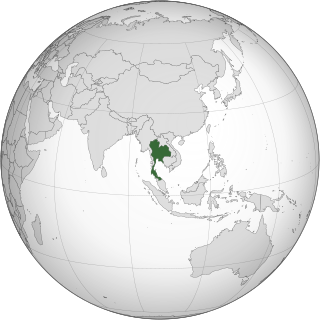Related Research Articles
Telecommunications in Pakistan describes the overall environment for the mobile telecommunications, telephone, and Internet markets in Pakistan.
The liberalization of Bangladesh's telecommunications sector began with small steps in 1989 with the issuance of a license to a private operator for the provision of inter alia cellular mobile services to compete with Bangladesh Telegraph and Telephone Board (BTTB), the previous monopoly provider of telecommunications services within Bangladesh. Significant changes in the number of fixed and mobile services deployed in Bangladesh occurred in the late 1990s and the number of services in operation has subsequently grown exponentially in the past five years.

The North American Numbering Plan (NANP) is a telephone numbering plan for twenty-five regions in twenty countries, primarily in North America and the Caribbean. This group is historically known as World Zone 1 and has the telephone country code 1. Some North American countries, most notably Mexico, do not participate in the NANP.
A toll-free telephone number or freephone number is a telephone number that is billed for all arriving calls. For the calling party, a call to a toll-free number from a landline is free of charge. A toll-free number is identified by a dialing prefix similar to an area code. The specific service access varies by country.
A telephone numbering plan is a type of numbering scheme used in telecommunication to assign telephone numbers to subscriber telephones or other telephony endpoints. Telephone numbers are the addresses of participants in a telephone network, reachable by a system of destination code routing. Telephone numbering plans are defined in each of the administrative regions of the public switched telephone network (PSTN) and in private telephone networks.

The French telephone numbering plan is used in Metropolitan France, French overseas departments and some overseas collectivities.
In Argentina, area codes are two, three, or four digits long. Local customer numbers are six to eight digits long. The total number of digits is ten, for example, phone number (11) 1234-5678 for Buenos Aires is made up of a 2-digit area code number and an 8-digit subscriber's number, while (383) 123-4567 would be an example of a Catamarca number.

The country calling code of Bangladesh is +880.

Regulation of the telephone numbers in Serbia is under the responsibility of the Regulatory Agency of Electronic Communication and Mail Services (RATEL), independent from the government. The country calling code of Serbia is +381. The country has an open telephone numbering plan, with most numbers consisting of a 2- or 3-digit calling code and a 6-7 digits of customer number.

Teletalk Bangladesh Limited DBA Teletalk is the only state-owned GSM, 3G, LTE, 5G based mobile phone operator in Bangladesh that started operating in 2004. As of August 2021, Teletalk had a subscriber base of 6.27 million.

Thailand's telephone numbering plan in Thailand is managed by the National Broadcasting and Telecommunications Commission (NBTC) in accordance with International Telecommunication Union's (ITU) recommendation E.164.

Telephone numbers in India are administered under the National Numbering Plan of 2003 by the Department of Telecommunications of the Government of India. The numbering plan was last updated in 2015. The country code "91" was assigned to India by the International Telecommunication Union in the 1960s.

Telephone numbers in Russia are administered by Roskomnadzor, and Ministry of Digital Development, Communications and Mass Communications of the Russian Federation. Russia's National Numbering Plan (NNP) is a four-level telephone numbering plan with local, zone, country, and international scopes, implementing a closed numbering plan, in which the number of digits of all national significant numbers (NSN) assigned to subscriber telephones is fixed at ten, with three digits for the area code, and a seven-digit subscriber number which includes a zone code of up to two digits. Internationally, Russia participates in the numbering plans of the International Telecommunication Union (ITU) provided by recommendations E.164 and E.123, using the telephone country code 7.
The following telephone numbers in Kenya are destination codes for international calls terminating in Kenya as well as the procedures for dialling internationally from within Kenya. Until 1999, Kenya shared its telephone numbering plan with Tanzania and Uganda, meaning that to make calls between the three countries, subscribers needed only dial the area code and number, a legacy of the East African Post and Telecommunications Corporation (EAPTC) which was dissolved in 1977. As a result of the reorganisation of Tanzania's numbering plan in that year, direct dialling was discontinued, although calls between the three countries do not require international dialling, only a special three-digit code.
Like many developed and developing countries, the Internet in Bangladesh has witnessed significant growth. Although facing many constraints in expanding Internet access and use, development of the Internet and Information Technology are high government priorities. In March, 2021 Internet users in Bangladesh increased to 116 million. On 19 February 2018, Bangladesh started the 4G network service.
Telebarta is a Bangladeshi fixed line operator. It is a private public switched telephone network (PSTN) operator in Bangladesh. As of May 2008, total number of subscribers of this operator is 56,424.
Onetel is a Bangladeshi fixed line operator. It is a public switched telephone network operator in Bangladesh. As of May 2008, total number of subscribers was 37.796 thousand.

Peoples Telecommunication & Information Services Ltd., doing business as (PeoplesTel) (Bengali: পিপলসটেল), is a Bangladeshi fixed line operator. It is a private public switched telephone network (PSTN) operator, ISP and Hosted Call Centre Service Provider in Bangladesh.in end of the 2023 few People'sTel assets sold to Etisalat
RanksTel is a Bangladeshi telecommunications company. It is a private public switched telephone network (PSTN) operator in Bangladesh, and nation's second largest PSTN operator.in end of the 2023 many few Rankstel assets was sold to BSNL Mobile

Warid was a GSM based mobile network operator in Bangladesh. It entered into Bangladeshi telecommunication industry as the sixth mobile carrier. It commenced commercial operations on May 10, 2007.
References
- ↑ "Bangladesh Telecommunication Regulatory Commission". Archived from the original on 2008-07-07. Retrieved 2008-07-08.
- ↑ "Bangladesh Telecommunication Regulatory Commission". Archived from the original on 2006-04-06. Retrieved 2008-03-17.